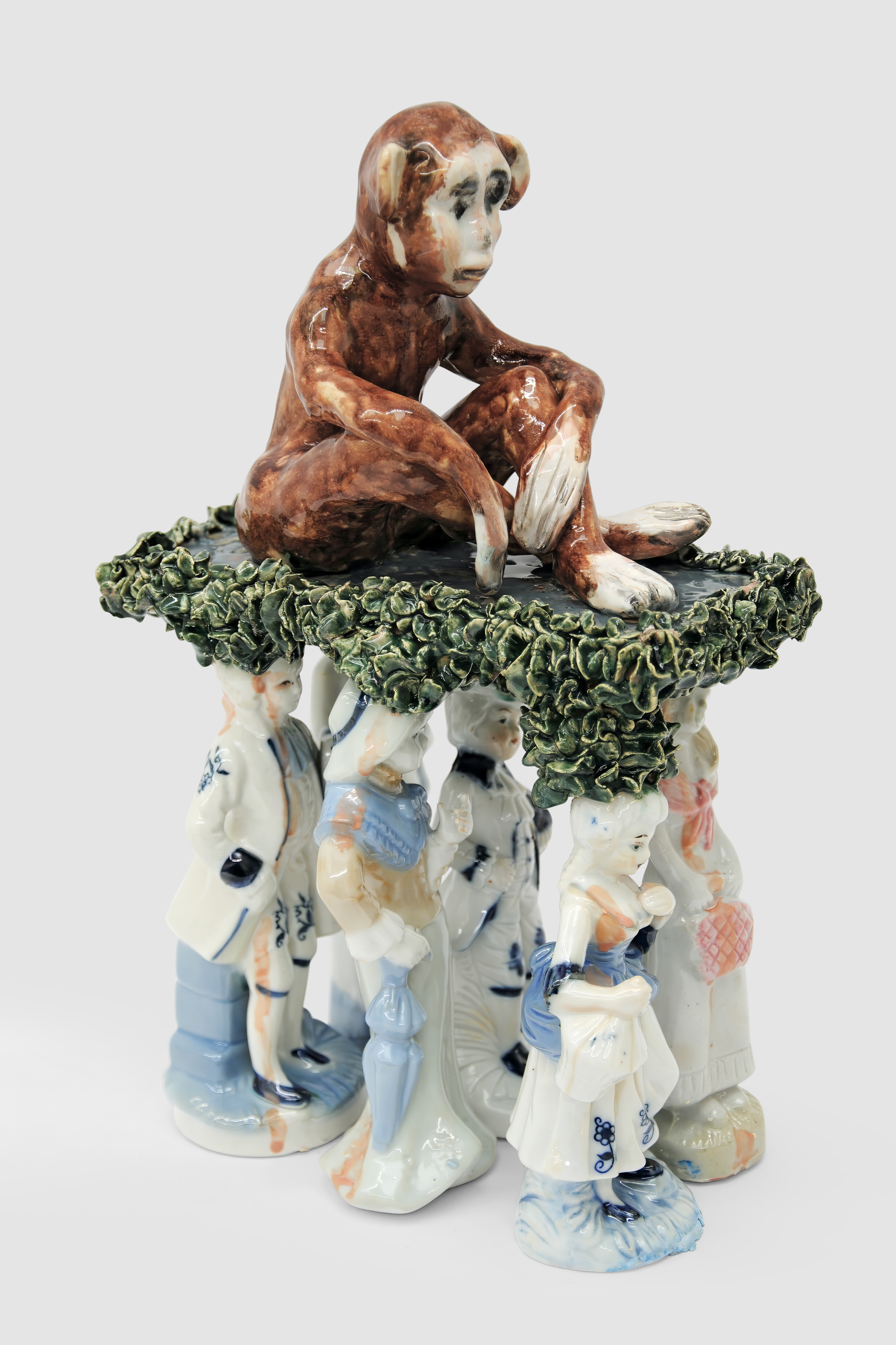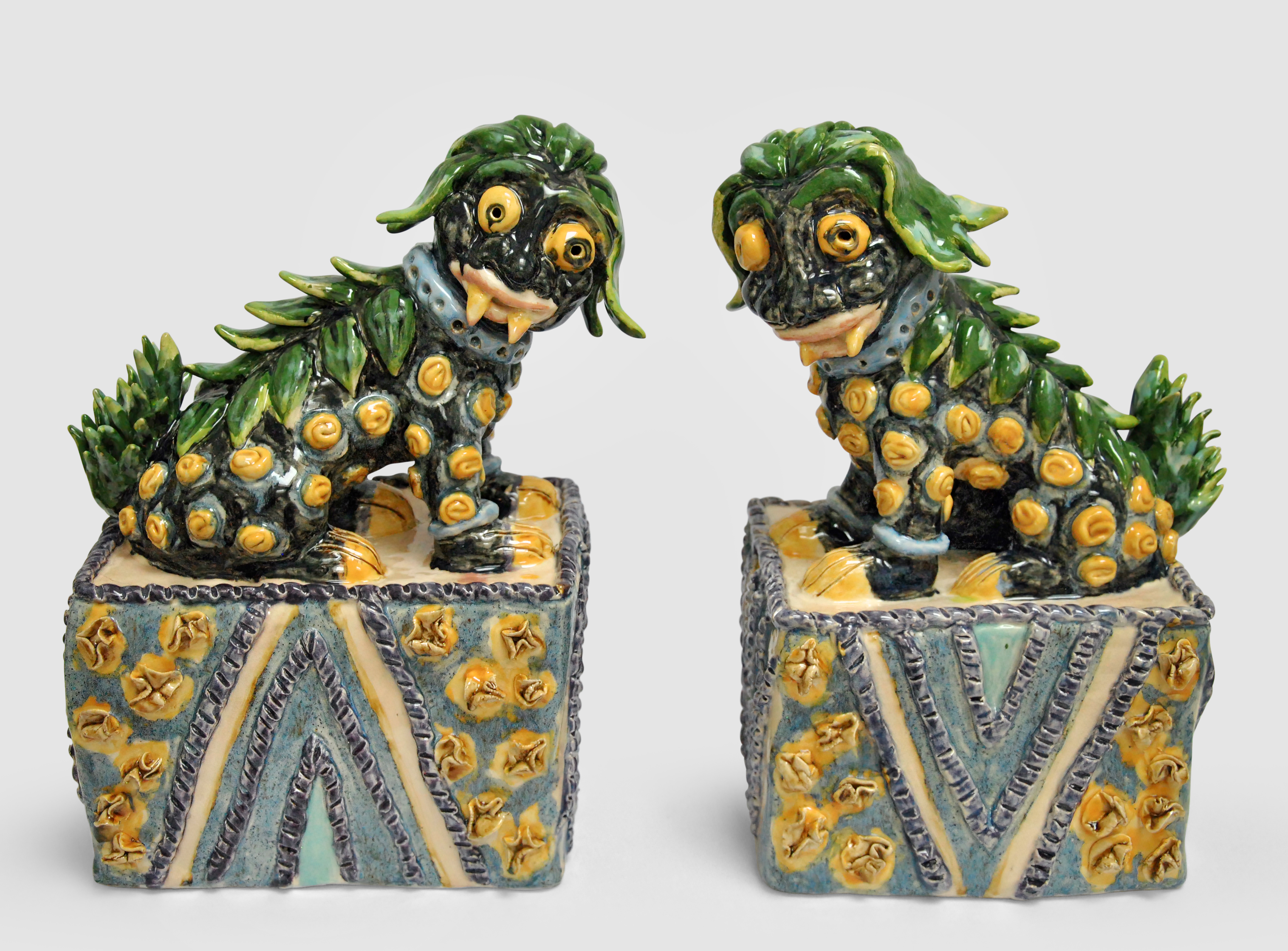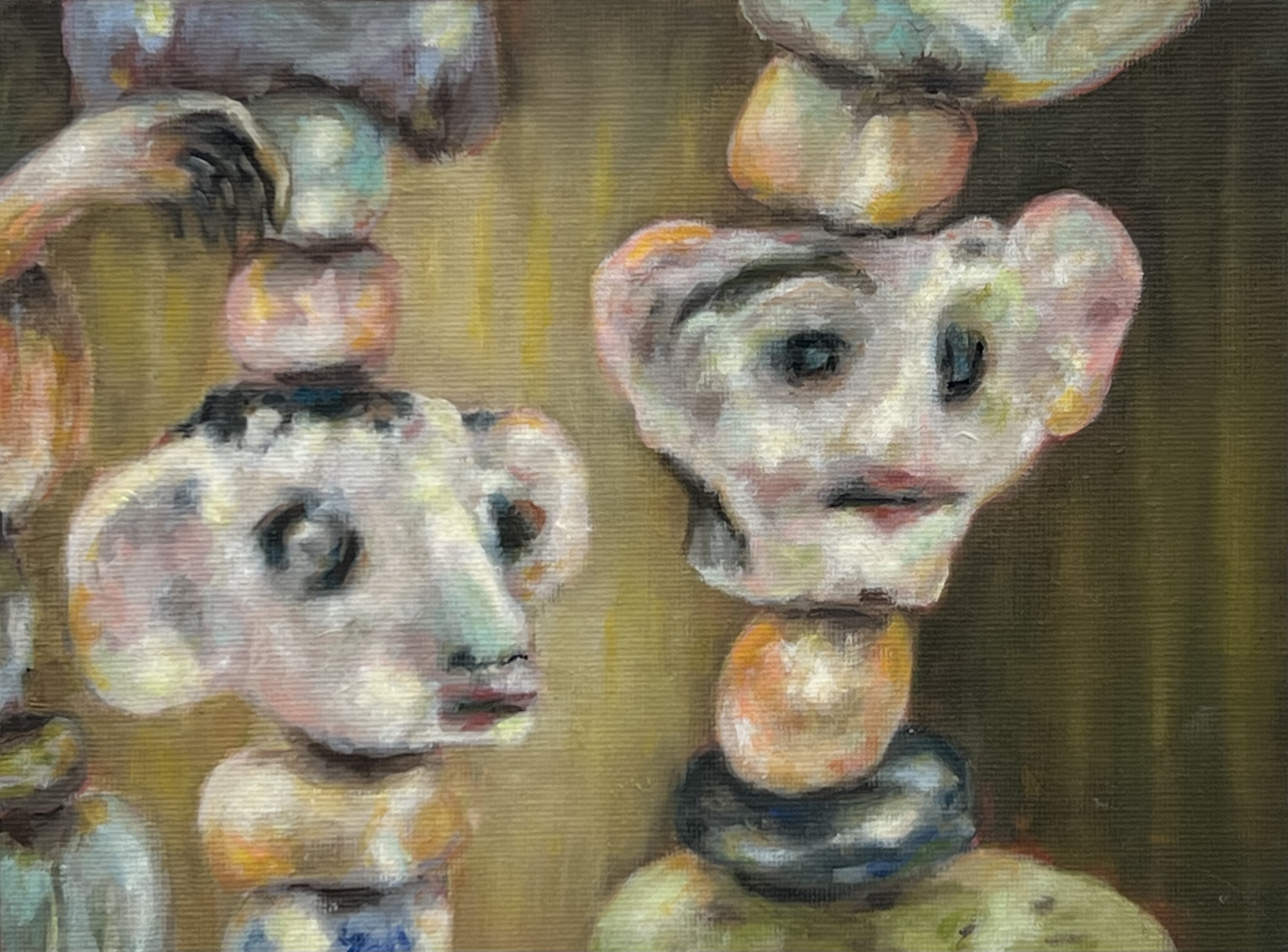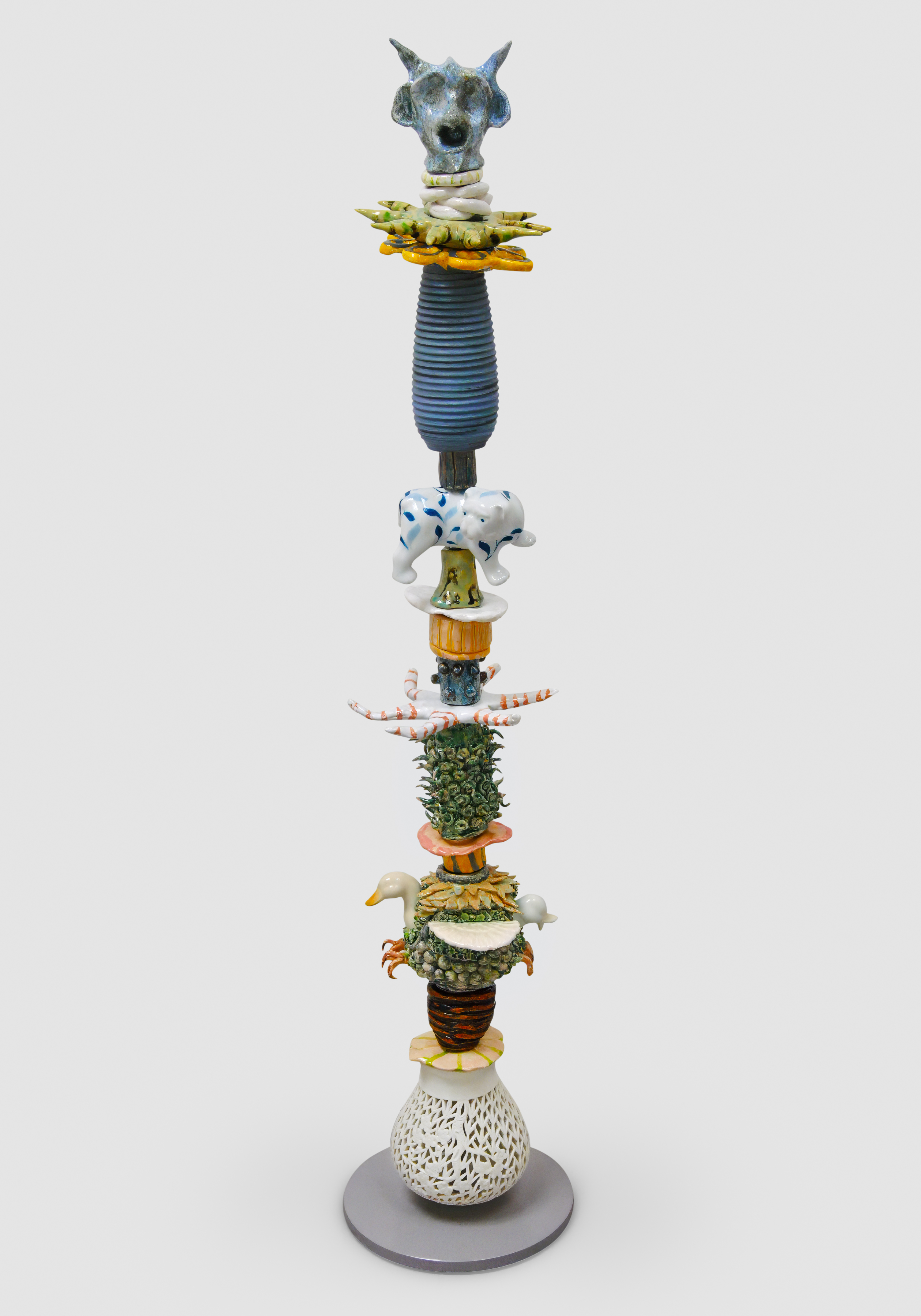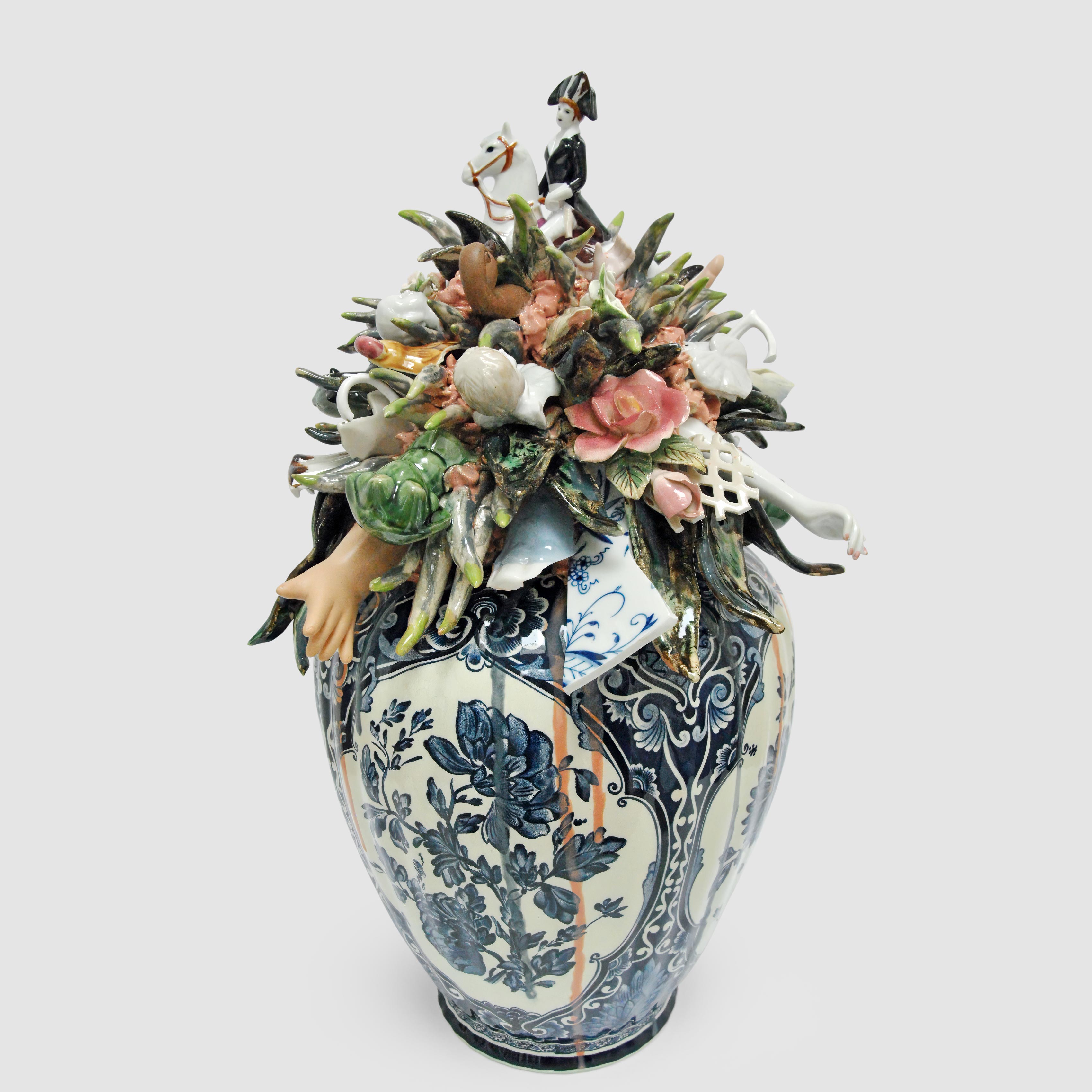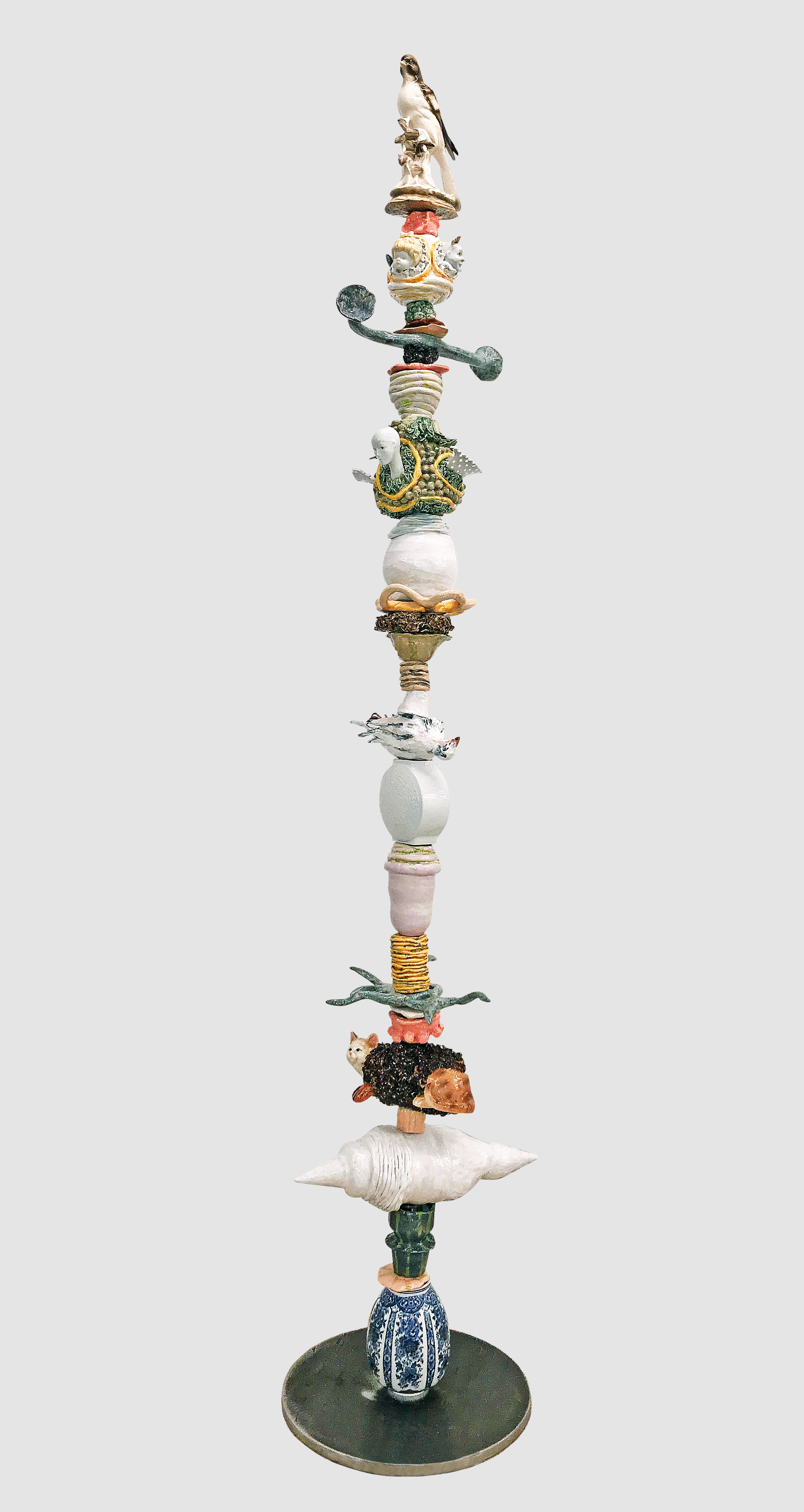Beate Höing
(Germany, 1966)
With her small-scale pictures and objects, Beate Höing lures the viewer into a shrinking world. Her paintings are based on photographs from a private fund and show a petit bourgeois ambiance with lace doilies and crocheted cushions, plastic flowers and patterned wallpaper, in which—between rustic furniture and loving bric-a-brac—there is simply too much of everything. In such worlds of homey orderliness, there repose many memories of childhood and snug security, of a certain (moral, perhaps also mental) narrowness that, with today’s globalizing efforts, can no longer relate to all of life’s diverse levels. But this form of antiquated climate also embraces (or embraced) a comforting human dimension and the feeling of a (former) idyllic world.
In her porcelain objects, Beate Höing ironically recreates the world of her paintings, which she composes from flea market finds and her handmade pieces. She combines her own figures with partly kitsch and partly pretentious second-hand porcelain figures, giving the found objects a new narrative content. The consciously imperfect figures, whose effect is always somewhat improvised and peculiar, symbolize the tenuousness and vulnerability of the cozy world they (and the paintings) reflect.
Thus Beate Höing offers the viewer a humorous insight into a small world that, with its privacy and intimacy, can sometimes mean more to us than liberal sophistication by recalling a cozy existence that arouses nostalgia and memories of times past, but that has been functioning less and less ever since. the generation forced into it is gradually disappearing.
